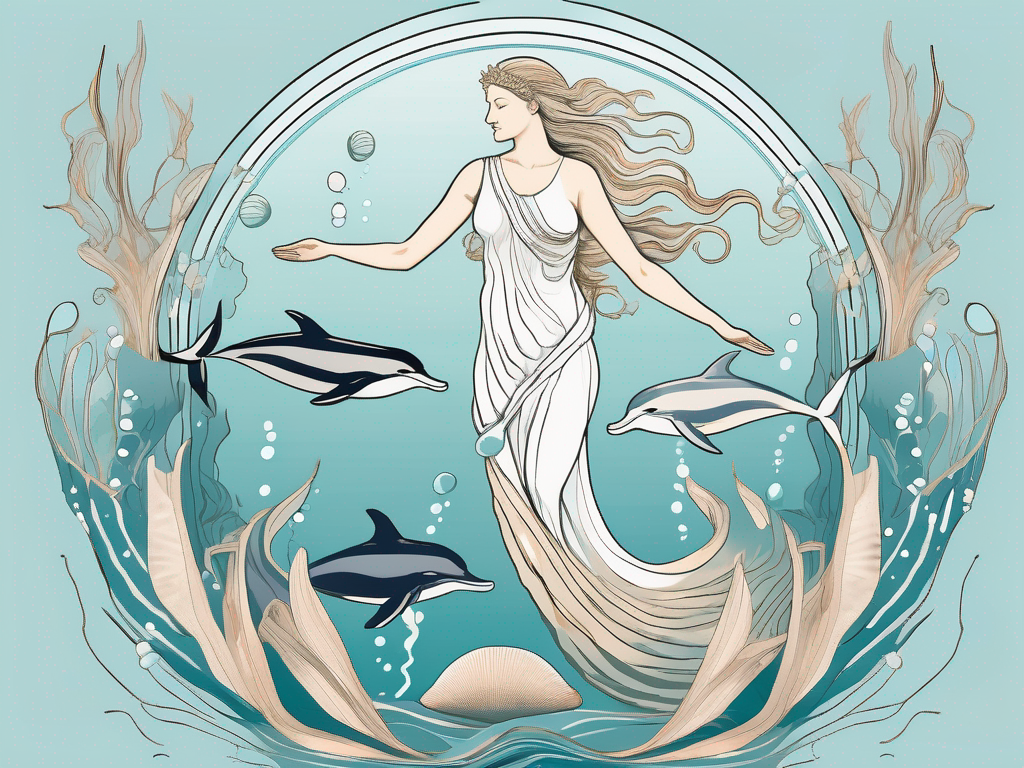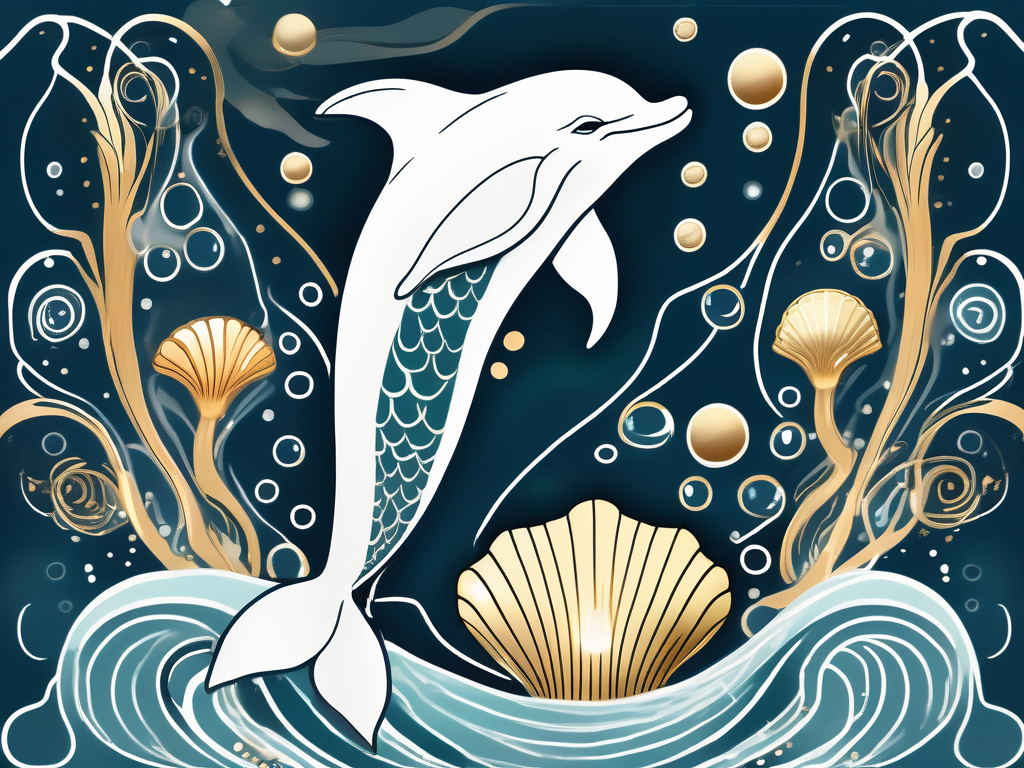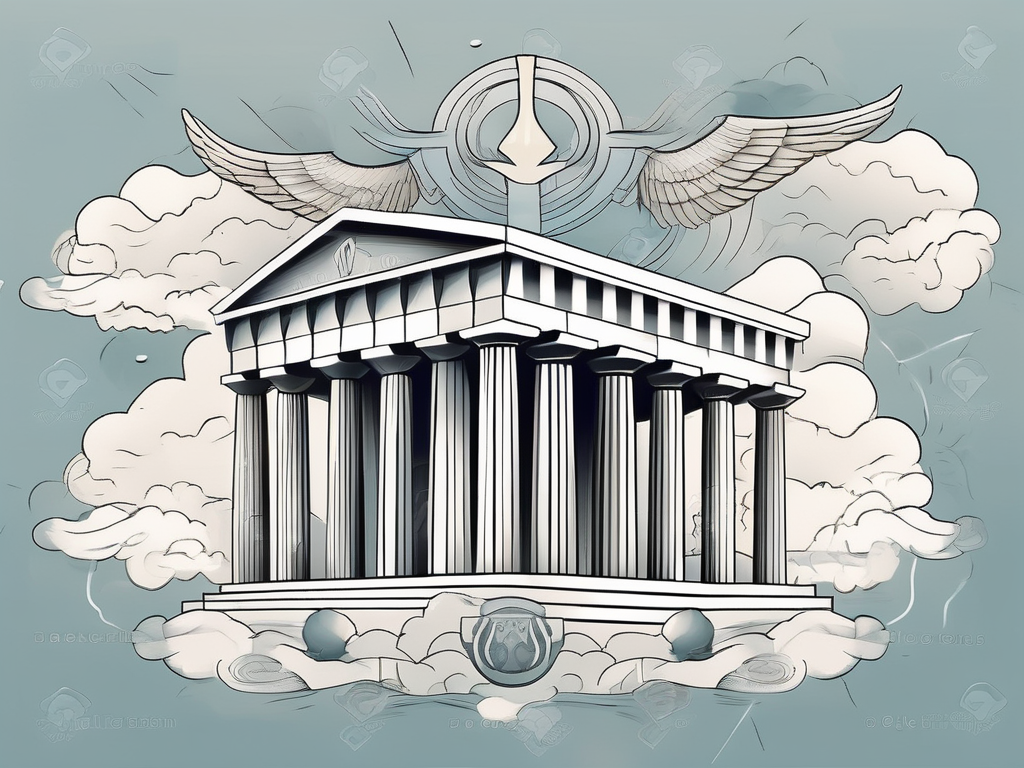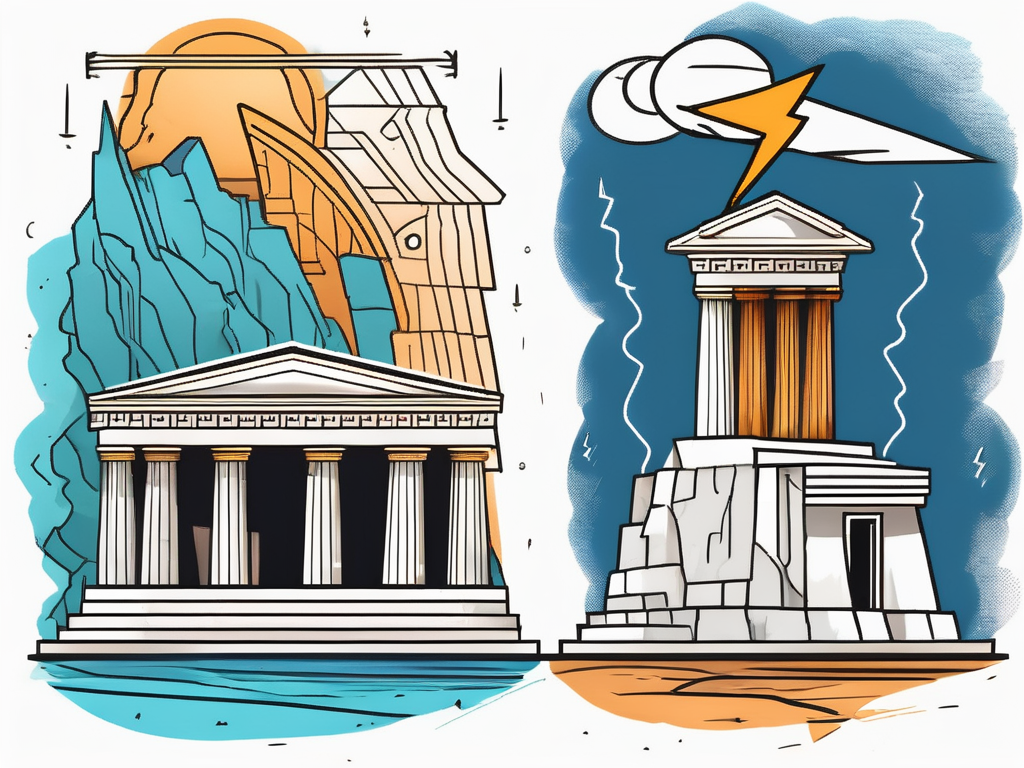If you have ever delved into the fascinating world of Greek mythology, you may have come across the name Doris. She is one of the lesser-known figures in the pantheon of gods and goddesses but possesses a unique allure that captivates those who dare to explore her story. In this article, we will embark on a journey to unravel the mysteries surrounding Doris, shedding light on her role in Greek mythology, her origins as described in ancient texts, her connection to the enchanting Nereids, her influence on art and literature, and her lasting legacy in modern Greek culture. So, grab your figurative snorkel and let’s dive into the depths of Doris’ compelling tale!
Understanding the Role of Doris in Greek Mythology
Before we embark on our exploration, it is essential to grasp Doris’ place in the vast tapestry of Greek mythology. In the hierarchy of deities, Doris is believed to be one of the Oceanids, or water nymphs, who served as attendants to the mighty Poseidon, the god of the seas. With her unique attributes and symbolism, Doris represents various elements associated with the oceans – from its vastness and power to its beauty and mysteries.
However, Doris’ role extends beyond just being a mere attendant. As we move forward, we will unravel the significance she holds among other gods and goddesses and how her representation shapes the intricate web of Greek mythology.
Let us delve deeper into the origins of Doris and her lineage. According to ancient texts, Doris is the daughter of Oceanus, the primordial Titan who personifies the great river that encircled the world. As Oceanus’ offspring, Doris inherits a connection to the vastness and ever-flowing nature of the oceans. She embodies the ebb and flow of the tides, the rhythmic movement that shapes the shores and influences the lives of mortals and immortals alike.
As an Oceanid, Doris is not only associated with the seas but also with the freshwater sources that nourish the earth. She is believed to have dominion over springs, fountains, and rivers, which are essential for sustaining life. In this aspect, Doris represents the life-giving and purifying qualities of water, a vital element that sustains all living beings.
Furthermore, Doris’ role in Greek mythology goes beyond her association with water. She is often depicted as a gentle and benevolent nymph, embodying the nurturing aspects of nature. Doris is known to be a loving mother, as she is the mother of fifty daughters, known as the Nereids. These nymphs, like their mother, are closely connected to the sea and are often depicted as beautiful maidens, accompanying Poseidon in his watery realm.
Each of Doris’ daughters, the Nereids, has her own unique attributes and characteristics. Some are associated with calm seas and gentle waves, while others personify the tempestuous and unpredictable nature of the ocean. Together, they represent the diverse manifestations of the sea and its influence on human life.
It is also worth noting that Doris’ influence extends beyond the realm of Poseidon. In some myths, she is considered the mother of the river gods, such as Achelous and Alpheus, further emphasizing her connection to the waters that flow across the land. This expands her role as a deity associated with both the vastness of the oceans and the intricate network of rivers and streams that shape the earth’s landscape.
As we continue our exploration of Greek mythology, we will uncover more fascinating details about Doris and her interactions with other gods and goddesses. Her presence in the pantheon of deities adds depth and complexity to the narratives, highlighting the interconnectedness of the natural world and the divine.
The Origins of Doris: A Deep Dive into Ancient Texts
To get to know Doris more intimately, we turn to the ancient texts that have preserved her story throughout the ages. Homer, the famed poet, introduced Doris in both the Iliad and the Odyssey, providing glimpses of her encounters and interactions within the epic narratives. Additionally, Hesiod’s Theogony, a poetic work that explores the genealogy of the gods, offers us further insights into the origin and lineage of Doris.
Let us first explore Homer’s portrayal of Doris in the Iliad. In this epic poem, Doris is depicted as a sea nymph, a daughter of Oceanus and Tethys. She is described as a beautiful and graceful deity, with flowing hair and a serene presence. Throughout the Iliad, Doris is often seen accompanying her sisters, the Nereids, as they traverse the depths of the sea. She is known for her gentle nature and her ability to calm the turbulent waters, bringing peace and tranquility to sailors.
In the Odyssey, Homer provides us with further glimpses into Doris’ character. Here, she is portrayed as a wise and compassionate deity, offering guidance and protection to Odysseus during his perilous journey. Doris is described as a guardian of the sea, watching over sailors and ensuring their safe passage. Her presence brings a sense of comfort and reassurance to those who venture into the vast and unpredictable waters.
Turning our attention to Hesiod’s Theogony, we uncover more details about Doris’ lineage and her place among the gods. According to Hesiod, Doris is one of the fifty daughters of Oceanus and Tethys, known collectively as the Oceanids. These divine nymphs are associated with various bodies of water, including rivers, springs, and lakes. Doris, as a sea nymph, embodies the essence of the sea itself, possessing its vastness, beauty, and power.
As we delve deeper into Hesiod’s poetic work, we learn that Doris eventually marries Nereus, the eldest son of Pontus and Gaia. Nereus, a wise and prophetic deity, is often depicted as an old man with a long, flowing beard. Together, Doris and Nereus become the parents of the Nereids, a group of fifty sea nymphs who inherit their mother’s grace and their father’s wisdom.
Through these ancient texts, we gain a more comprehensive understanding of Doris and her significance within Greek mythology. She is not merely a minor deity, but a powerful and influential figure who commands the seas and guides those who traverse its depths. Doris’ story serves as a reminder of the rich and complex tapestry of ancient Greek mythology, where even the seemingly minor characters have their own fascinating tales to tell.
Doris and the Nereids: The Sea Nymphs of Greek Mythology
As we shift our attention, a captivating aspect of Doris’ story comes to the forefront – her profound connection to the mesmerizing Nereids. These enchanting sea nymphs, daughters of Doris and her husband Nereus, add an extra layer of intrigue to Doris’ tale.
Let us uncover the significance of the Nereids and the role they played alongside Doris in the vast realm of Greek mythology. Through exploring their attributes and contributions to the mythological narrative, we can gain a deeper appreciation for the unique place Doris held as their mother, guiding and nurturing these fascinating creatures of the sea.
The Nereids, often depicted as beautiful young maidens, were the fifty daughters of Doris and Nereus. Each Nereid possessed her own distinct personality and domain within the vast seas. They were known for their enchanting voices, which could lure sailors to their doom or bring comfort and protection to those in need.
One of the most well-known Nereids was Thetis, the mother of the mighty hero Achilles. Thetis was renowned for her beauty and grace, and her marriage to the mortal Peleus was a significant event in Greek mythology. Their union was blessed by the gods, and their son Achilles would go on to become a legendary figure in the Trojan War.
Another notable Nereid was Galatea, who was often associated with love and desire. She captured the heart of the Cyclops Polyphemus, causing jealousy and anger among the other gods. Galatea’s story serves as a cautionary tale of the consequences of forbidden love and the power of divine intervention.
Amphitrite, the wife of Poseidon, was also counted among the Nereids. As the queen of the sea, she held great influence and played a crucial role in the realm of the gods. Her marriage to Poseidon symbolized the union of the sea and the land, and their offspring included powerful deities such as Triton.
These are just a few examples of the diverse and fascinating Nereids that populated the Greek mythological landscape. Each Nereid had her own unique story and significance, adding depth and complexity to the world of Greek mythology.
As the mother of the Nereids, Doris held a special place in their lives. She guided and nurtured them, instilling in them the wisdom and grace that would define their existence. Doris’ role as their mother was not only one of biological connection but also one of mentorship and guidance.
Together, Doris and the Nereids formed a powerful and influential force in Greek mythology. Their stories intertwined, creating a tapestry of beauty, intrigue, and adventure. Through their collective presence, they brought the vastness of the sea to life and showcased the intricate relationships between gods, nymphs, and mortals.
Doris’ Influence on Art and Literature
As we transition to another facet of Doris’ legacy, we discover her profound impact on the realms of art and literature. Throughout the ages, artists and writers have drawn inspiration from Greek mythology, and Doris has proven to be a compelling muse.
We take a glance at ancient Greek art, examining the depictions of Doris through sculptures, paintings, and other artistic mediums. Moreover, we explore her influence on modern literature and popular culture, uncovering how authors and creators continue to incorporate her captivating essence into their works to this day.
The Legacy of Doris: From Myth to Modernity
Finally, we conclude our journey by diving into the enduring legacy of Doris in modern Greek culture. Though the ancient tales have faded into the annals of history, the impact of Doris continues to resonate through contemporary interpretations of Greek mythology.
We investigate the ways in which Doris has shaped modern Greek culture, from her presence in festivals and traditions to her incorporation into various aspects of daily life. By understanding her lasting influence, we gain a comprehensive picture of the power and significance that Doris holds even in the present day.
In Conclusion
Throughout our exploration, we have unveiled the veil of mystery surrounding the mythical Doris, discovering her role in Greek mythology, her origins described in ancient texts, her connection to the captivating Nereids, her influence on art and literature, and her enduring legacy in modern Greek culture. The story of Doris serves as a reminder of the rich tapestry of ancient Greek mythology, where even the lesser-known deities possess their unique allure and contribute to the vibrant narrative that continues to captivate countless individuals to this day.












